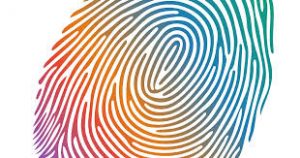 Recently there were a couple of notable fails in biometric authentication. The fingerprint reader in Samsung’s Galaxy S10 and Note10 smartphones will allow any finger to open the phone if the user has installed a cheap screen protector film. In security parlance, this is a “fail-open” or “false positive” scenario. An update is pending. And Google’s new Pixel 4 phone’s facial recognition security ap will open the phone even if your eyes are closed, making it possible for someone else of unlock your phone when you are asleep. Again, a fix is pending.
Recently there were a couple of notable fails in biometric authentication. The fingerprint reader in Samsung’s Galaxy S10 and Note10 smartphones will allow any finger to open the phone if the user has installed a cheap screen protector film. In security parlance, this is a “fail-open” or “false positive” scenario. An update is pending. And Google’s new Pixel 4 phone’s facial recognition security ap will open the phone even if your eyes are closed, making it possible for someone else of unlock your phone when you are asleep. Again, a fix is pending.
Biometrics have become a favorite method of many manufacturers for securing phones, tablets, and other devices, principally because its ease of use makes these solutions popular with consumers. But biometrics has its problems.
NIST, the government agency tasked with providing information security standards for federal government networks, is not a fan of biometric authentication, for the following reasons:
- Biometric characteristics are not secrets. Pictures can defeat facial recognition, and latent fingerprints can be recovered anywhere. Iris and retina images are on file at your optometrist’s office.
- Biometric matching is based on the probablity that the stored image matches the original. Other forms of authentication are determined using exact matching.
- In the event a biometric authenticator is breached or compromised, it cannot be replaced, it can only be revoked.
According to NIST, biometrics should only be used as a third factor in a multi-factor authentication system, which also includes something you know, like a password, and something you have, like an authenticator app.
For the meanwhile, my recommendation is to use biometrics sparingly, and in combination with at least one other factor.
More information:
ShareNOV




About the Author:
I am a cybersecurity and IT instructor, cybersecurity analyst, pen-tester, trainer, and speaker. I am an owner of the WyzCo Group Inc. In addition to consulting on security products and services, I also conduct security audits, compliance audits, vulnerability assessments and penetration tests. I also teach Cybersecurity Awareness Training classes. I work as an information technology and cybersecurity instructor for several training and certification organizations. I have worked in corporate, military, government, and workforce development training environments I am a frequent speaker at professional conferences such as the Minnesota Bloggers Conference, Secure360 Security Conference in 2016, 2017, 2018, 2019, the (ISC)2 World Congress 2016, and the ISSA International Conference 2017, and many local community organizations, including Chambers of Commerce, SCORE, and several school districts. I have been blogging on cybersecurity since 2006 at http://wyzguyscybersecurity.com